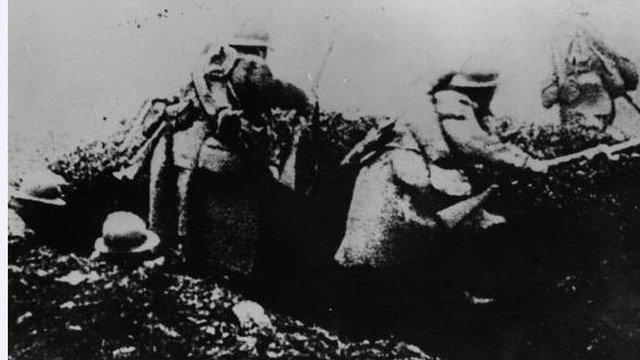My great-grandfather Oz, the boy soldier from Abercynon
- Published
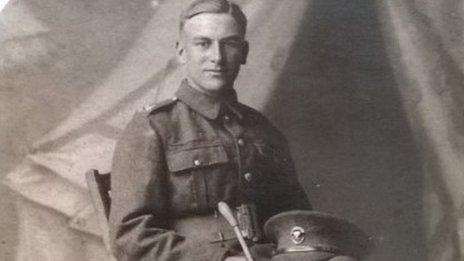
'Oz' may have successfully joined up a second time, while still under age
As armistice day approaches on the centenary year of the outbreak of World War One, the sacrifice made by those who fought for their country will be remembered.
But while many were drafted into the war effort through conscription, hundreds more too young to fight, were also eager to play their part.
BBC Radio Wales presenter Gareth Lewis has been finding out about one of his ancestors.

My great grandfather was a boy soldier.
Fredrick Oswald Reginald Hinks - Oz - was 15 years old when he signed up for the Army Service Corps in 1915. He told the recruiting officer he was 18.
Oz made it through 46 days of training in Aldershot before he was found out, "rescued" by his father and taken back home to Abercynon.
A set of circumstances almost unimaginable these days, but not so unusual during World War One.
There are no official figures for how many underage boys fought for Britain, but it is estimated there were hundreds from Wales and thousands across the UK.
Dr Emily Mayhew , a WW1 historian from Imperial College London, says that aside from typical teenage boys and testosterone, there are peculiarly Welsh reasons for youngsters joining up.
"Britain was defending the rights of small countries and we know people in Wales identified with Belgium, which was invaded on pretty much the first day of the war," she said.
Dr Mayhew also makes the sobering observation that fighting could have been favourable to the alternatives.
"The one thing you do know about people dying is that they die down the pits.
"The memorials you're likely to have seen are for miners who've been killed in accidents. As far as you're concerned soldiering is a better option".
But what of Oz?
Like countless other men, Oz did not talk much about the war.
As part of BBC Radio Wales' commemorations I have been working with genealogist Cat Whiteaway to find out what he did.
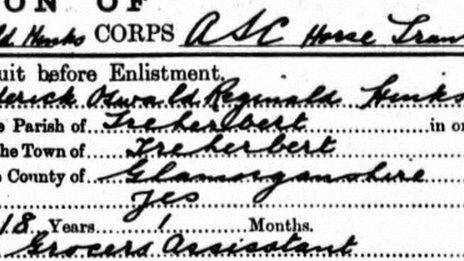
On his enlistment record he claims to be 18 years, one month
Fittingly, for a man who was not averse to a spot of illegal gambling, you could take a bet on which version you prefer.
The official version comes courtesy of his medals, service number and the surviving war records of the Somerset Light Infantry.
Who you served with became less dependent on where you were from, rather where there was need. It did not matter that he was from Abercynon.
Oz was posted overseas sometime after August 1917 and the end of the war, as part of the regiment's 7th Battalion, when he had reached the age of 18.
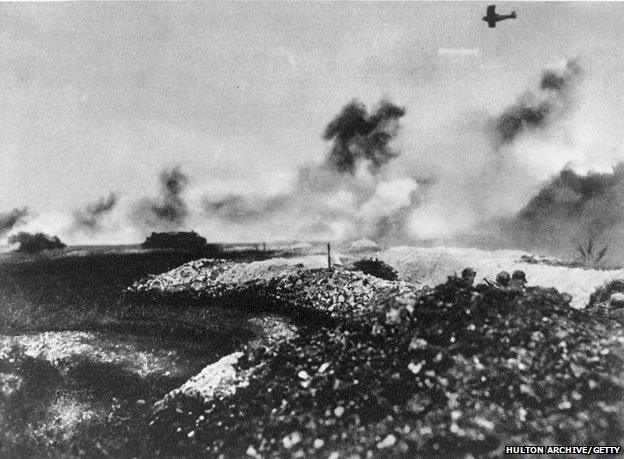
A battle on the ground and in the air near Cambrai in November 1917
The 7th fought at both the Battle of Cambrai 1917, which saw 44,000 casualties, and during the 1918 Spring Offensive, in which there were 418,000 British casualties and losses.
He might have fought there or he might have been sent later to replace those killed.
But Cat has another, tantalisingly plausible version of events too.
Oz's service number was 36437. She has found two fellow Somerset Light Infantrymen with higher service numbers, who both signed up in December 1915, two years before we know for certain that Oz was in the Army.
This suggests he might well have signed up under age again, and this time got away with it.
If true, what did he do between 1915 and August 1917?
If true, it ties in with limited stories he told about having been in Ireland to fight the Nationalists.
And if true, the thwarted boy soldier became a real boy soldier.
Oz was de-mobbed in January 1919 and got married a couple of years later.
He continued to live in Abercynon, and did a number of jobs including working in a rail yard.
- Published6 November 2014
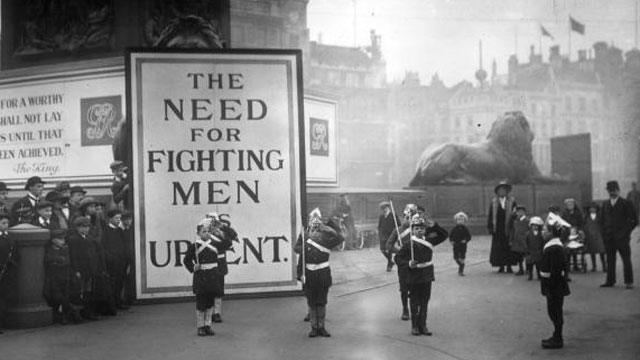
- Published6 November 2014
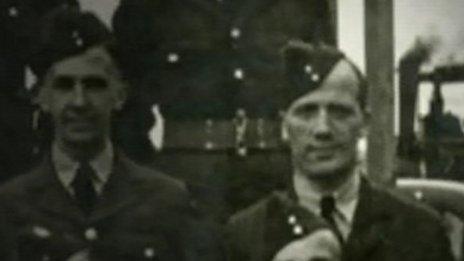
- Published7 November 2014
